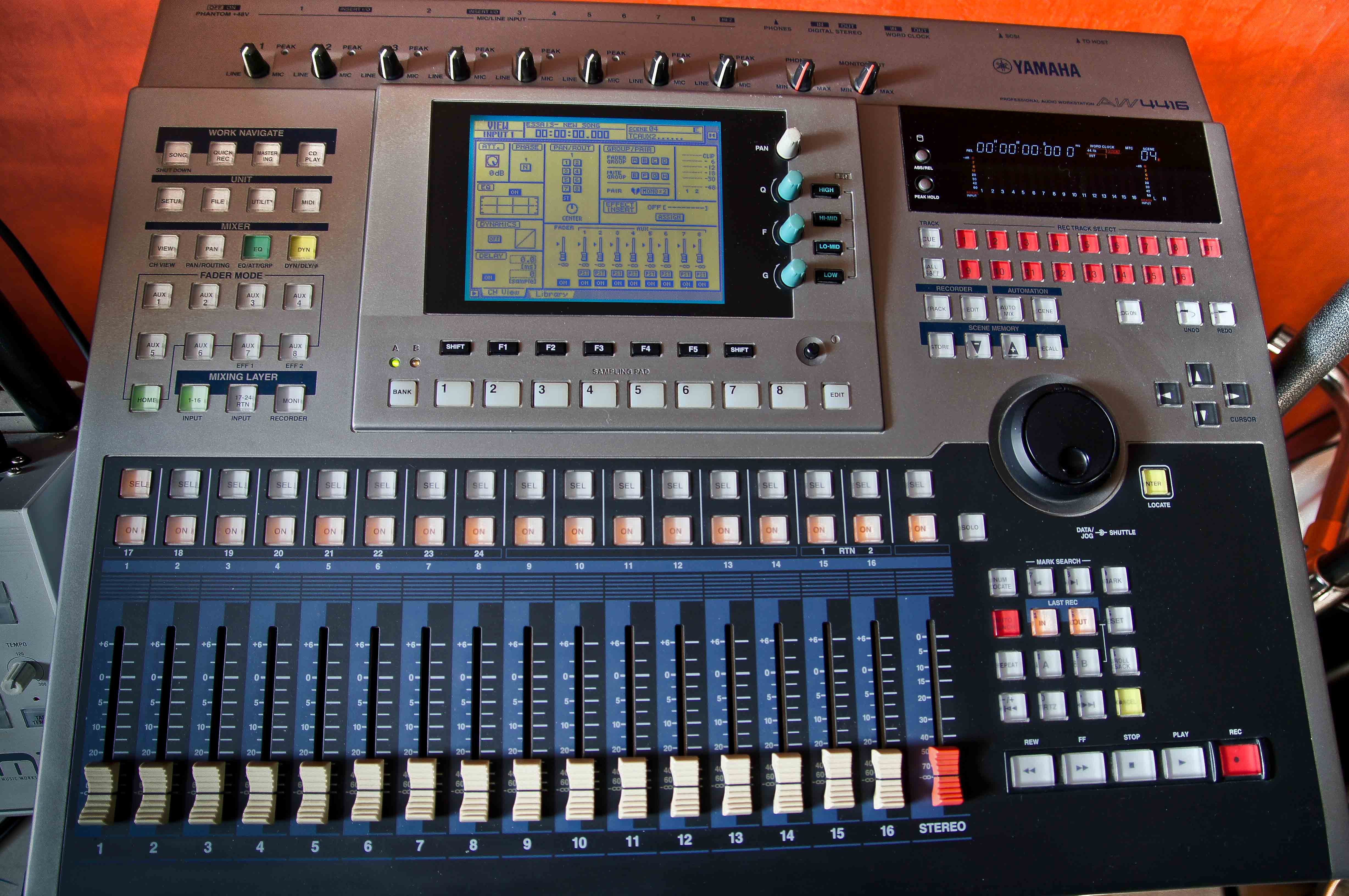Manual Uso Yamaha Aw4416
• PROFESSIONAL AUDIO WORKSTATION Tutorial. • It had to happen. The AW4416 can do what once required a couple of rooms full of very, very expensive equipment that required consider- able expertise to operate. And it does it very well, indeed.
Free download of Yamaha AW4416 User Manual. Troubleshooting help from experts and users. Ask our large community for support.
In short, the AW4416 can take your sound recording projects from conception to completion with pro- fessional-level control and quality. • To Process or Not To Process? 7 Load the Demo Song. 8 Load the Demo Song From the CD-ROM Onto the AW4416 Hard Disk. 8 Load the Demo Song from the Hard Disk. 10 Phase 1: Listen To the Tracks and Make a Plan. • Step 1: Set Up the “Master” EQ and Dynamics.
28 Step 2: Record the Song to the Stereo Track. 29 Step 3: Write the Song to a CD-R Disk. Fiatecuscan 3.4.1 Crack: Full Version Software. 30 Practice, Practice.
31 Tutorial—AW4416 Professional Audio Workstation — Tutorial. • Tutorial—Laying Down the Basic Tracks Laying Down the Basic Tracks Although the basic tracks you’ll use to assemble the “So Fine” mix have already been recorded for you (of course you can add your own tracks, if you like), let’s take a moment to discuss the initial recording process.
• And since the AW4416 provides switchable phantom power on inputs 1 and 2, you can choose studio-quality phantom-powered microphones with confidence. • Tutorial—Laying Down the Basic Tracks Overdubs The actual procedure for recording overdubs is really no different from recording the basic tracks, except that you’ll be monitoring previously recorded material while doing it. Remember to use a good pair of closed headphones to monitor the backing tracks while recording acoustic overdubs or vocals (not open types or the in-ear types often used with portable stereos) to prevent leakage of the head- phone mix back into the microphone. • [ENTER] key). The default SCSI drive number is SCSI#3. If you install a CD-RW drive manufactured by Yamaha, the SCSI ID will be set to “3” at the factory, and we recommend that you leave it at this setting.


• Load the Demo Song from the Hard Disk 1. Press the [SONG] key (and the [F1] function key if necessary to select the “Song List” page). Use the DATA dial to select “So Fine”. Move the cursor to “LOAD” on the display and press [ENTER]. When the “Will Save Current song.
• Tutorial—Mixdown Mixdown Although the term “mixdown” seems to imply a single action, it is really a pro- cess that can involve many interrelated steps. As you become more experienced, the individual steps will sort of blend into one larger operation. This is important because at all times you’ll need to consider how each small action will affect the overall sound.
Make sure that the RECORDER [MONI] MIXING LAYER is selected. Recall the scene number 01 “FADERS NOMINAL” provided to set faders 1 through 14 to nominal (Press the [SCENE] key, use the data dial to select the scene number 01 “FADERS NOMINAL”, move the cursor to “RECALL”, press [ENTER], select “OK”. • Tutorial—Mixdown Phase 2: Set Up a Rough Mix The rough mix is only the starting point for the final mix, and it doesn’t have to be perfect. The purpose of setting up a rough mix using only levels and panning is to give you a reference point on which to base decisions about more detailed pro- cessing, effects, automation, etc. • cases where the drums or other instrument seems to occupy the entire stereo field, try panning the left and right channels between about a third and half way to the maximum values.
In the case of the “So Fine” demo, however, the drums were recorded “live”. • Tutorial—Mixdown Add the Lead Vocal Ah-ha! You thought we were going to add the chorus parts on tracks 11, 12, and 13, and THEN add the lead vocal track, didn’t you! Well we won’t, and the reason is simply that the chorus parts really must be heard in relation to the lead vocal in order to set appropriate levels. • Phase 3: Assemble the Mix Part by Part Now we’re ready to do some serious work on the sound of the individual tracks in an attempt to make them “mesh” to create a well-balanced overall mix.
INSTANT GRATIFICATION! Once again, we’ve provided a scene you can simply recall to automatically make all the settings included in “Phase 3”, below. • Tutorial—Mixdown Track 3: Claves/Electronic Drums This track needs a bit of compression to make the electronic drums jump out of the mix when they appear at the outro.
Fs Global 2010 (fsx Fs9). Later, when we work on the automation, we’ll boost this track a bit at the outro for extra impact. • filter to remove some of the offending frequen- cies. The LOW band of the AW4416 parametric equalizer functions as a high- pass filter — all you have to do is make the appropriate settings. No compression is required. • Tutorial—Mixdown Track 8: Piano We’ll use some EQ to “thin out” the piano sound a bit, and give it a touch more presence so that it will come through in the mix a bit more. Piano EQ Tracks 9 & 10: Strings If we’d recorded real strings we might have needed a bit of processing here, but since this is pretty-much a “pre-processed”. • Female Chorus 2 Compression THRESH.